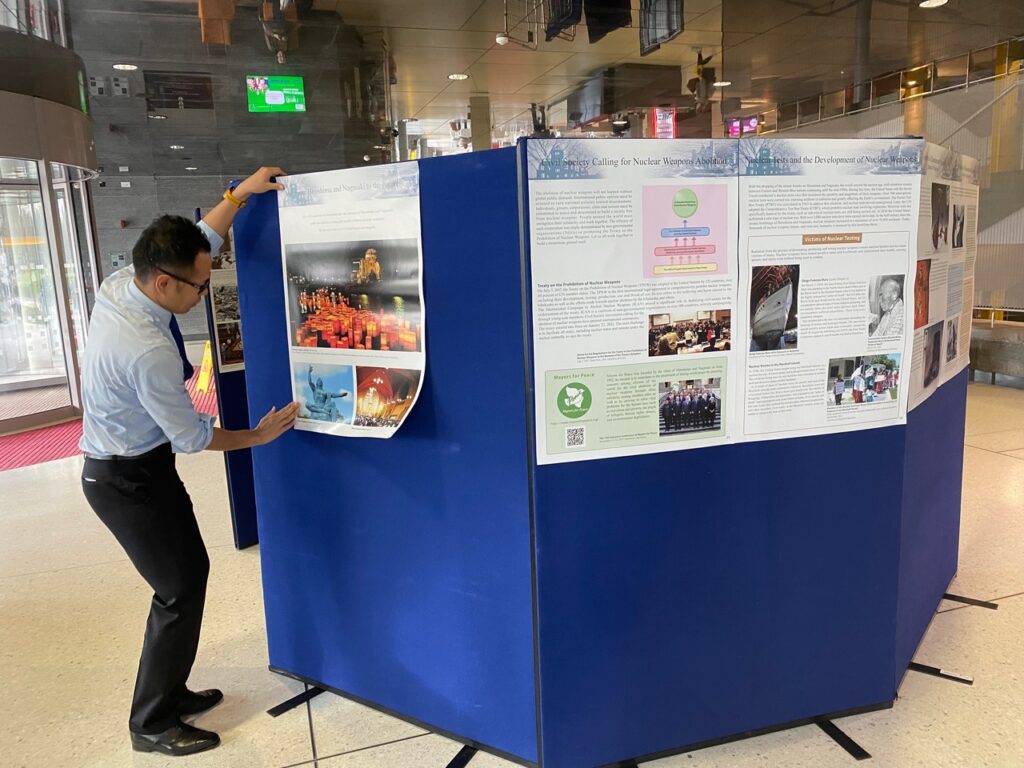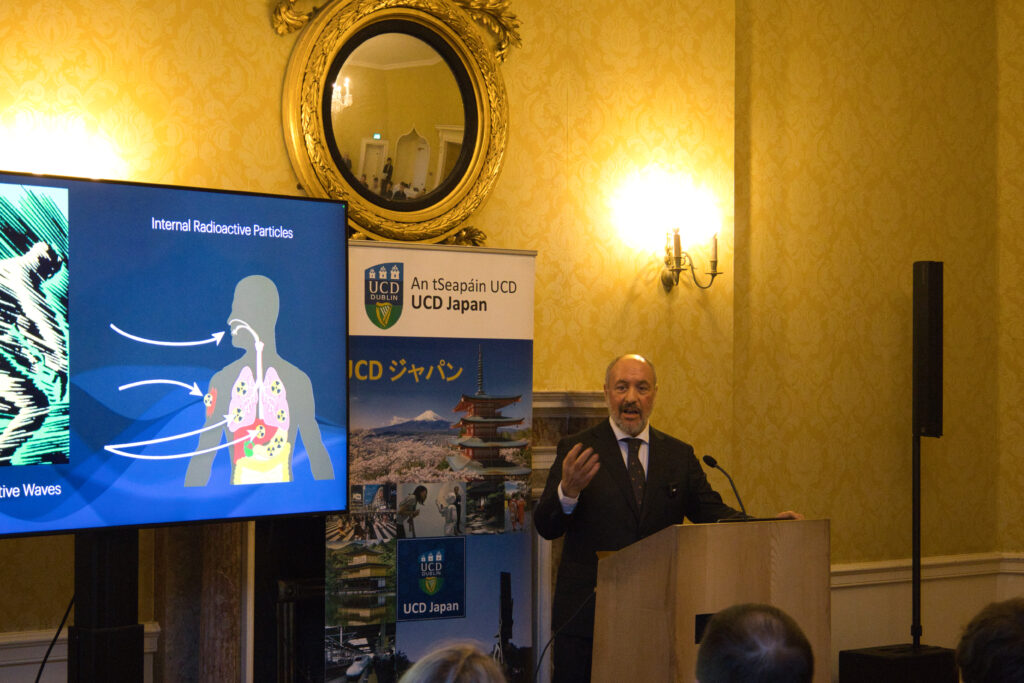Robert Jacobs(Professor)
In late winter this year, a collaboration between the University College Dublin Centre for Japan Studies and the Hiroshima Peace Culture Foundation initiated an annual Hiroshima Seminar to be held in Dublin, Ireland. I was honored to be invited to present the inaugural lecture this past February. This lecture was to be held simultaneously with a poster exhibition from the Hiroshima Peace Memorial Museum that was being displayed at the University College Dublin campus. So, in mid-February Mr. Yusuke Akishima, an administrative staff member of the HPI office, and I departed Hiroshima and flew to wintery Dublin.
We were warmly welcomed by our colleagues from the University College Dublin Centre for Japan Studies. The day after our arrival we all worked to install the "Legacies of the Atomic Bombing: Hiroshima Nagasaki Atomic Bomb Poster Exhibition” in the front entrance of the Student Center of the UCD Belfield Campus. The exhibition includes 30 graphic posters including images of Hiroshima before the nuclear attack, images taken immediately afterwards, of the rebuilding of the city, and of artwork and artifacts related to the attack of August 6th and the history of the city. The exhibition stood in a high-traffic area of the Student Center and was seen by dozens of students even as we were setting up the display.
The following day, on February 20th, I presented my lecture. The lecture was held at the Museum of Literature Ireland (MoLI) on St. Stephen’s Green in downtown Dublin. The MoLI is located in Newman House, which had previously been a school attended by the young James Joyce, and now holding a substantial number of Joyce related texts. It has beautiful exhibition and lecture spaces with permanent and changing exhibits.
My lecture was titled, “Is Hiroshima Still Radioactive? Nuclear Explosions and the Environment.” In the talk I first discussed how we encounter radiation both as waves and as particles, and that each behaves differently and distinctly. I explained how radioactive waves affected Hiroshima, as a single burst that lasted less than a minute but caused great harm to any living creature inside of its range. Particles, I explained, are different in that they are specific ionizing forms of chemicals, and they remain radioactive after the explosion; different particles remaining energetic for different lengths of time depending on its chemical nature. After the detonation of the nuclear weapon over Hiroshima on August 6, 1945, the radioactive waves were quickly gone, but the particles remained, and this was the source of the ongoing contamination.
In Hiroshima, many of the particles were washed to sea by Typhoon Ida (Makurazaki Typhoon), which struck the city in mid-September 1945. During the Occupation period, the US military also dumped a large amount of top soil from Hiroshima into the Seto Inland Sea. These had the effect of reducing the amounts of particles remaining in the city, although some had embedded into the ecosystem and endured. I then described the global distribution of radioactive fallout particles from nuclear weapon testing, especially tests of H-bombs. Recent scientific studies have found that there are more particles present from this distribution in Nagasaki and Hiroshima than from the direct attacks of 1945. In conclusion, the levels of radioactivity in Hiroshima now resemble those of most of the rest of the world, which also has endured fallout from Cold War H-bomb tests.
A lively question and answer period followed the lecture, with many inquiries coming from UCD students in attendance. The lecture was also joined by Irish Senators Emer Currie and John Cummins, and His Excellency Mr. Norio Maruyama, the Ambassador to Ireland from Japan. After the lecture had concluded, Ambassador Maruyama invited Mr. Akishima and myself, along with several colleagues from UCD, to dinner at his official residence. It was a culturally rich exchange in all ways, and an honor to be invited to deliver this inaugural lecture of what will certainly be an important annual exchange.


